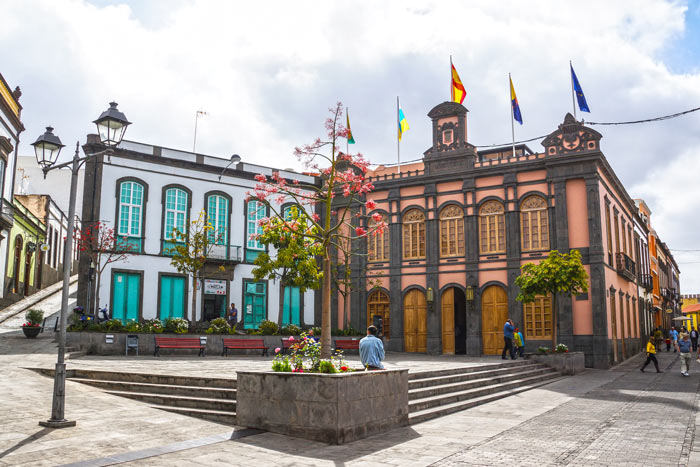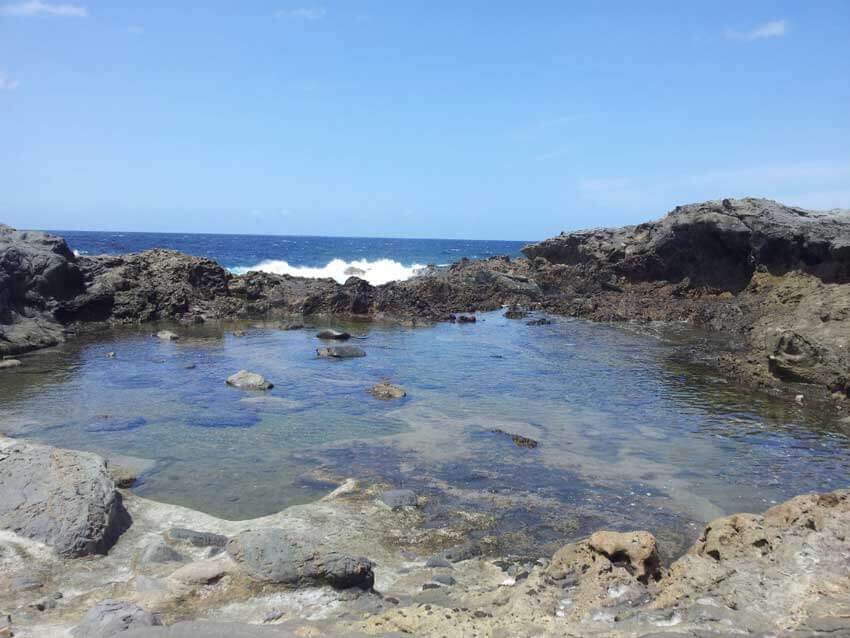Arucas, una ciudad con una rica historia
Arucas, ubicada en la provincia de Las Palmas, tiene una historia fascinante. Reconstruida en 1480 después de ser arrasada por los conquistadores españoles en 1478, la ciudad es conocida por sus destacados lugares de interés. Entre ellos, destacan la imponente iglesia de San Juan Bautista y la renombrada fábrica de ron Arehucas. Además, Arucas limita con el pie del monte homónimo, un antiguo volcán que añade un paisaje pintoresco a la región.
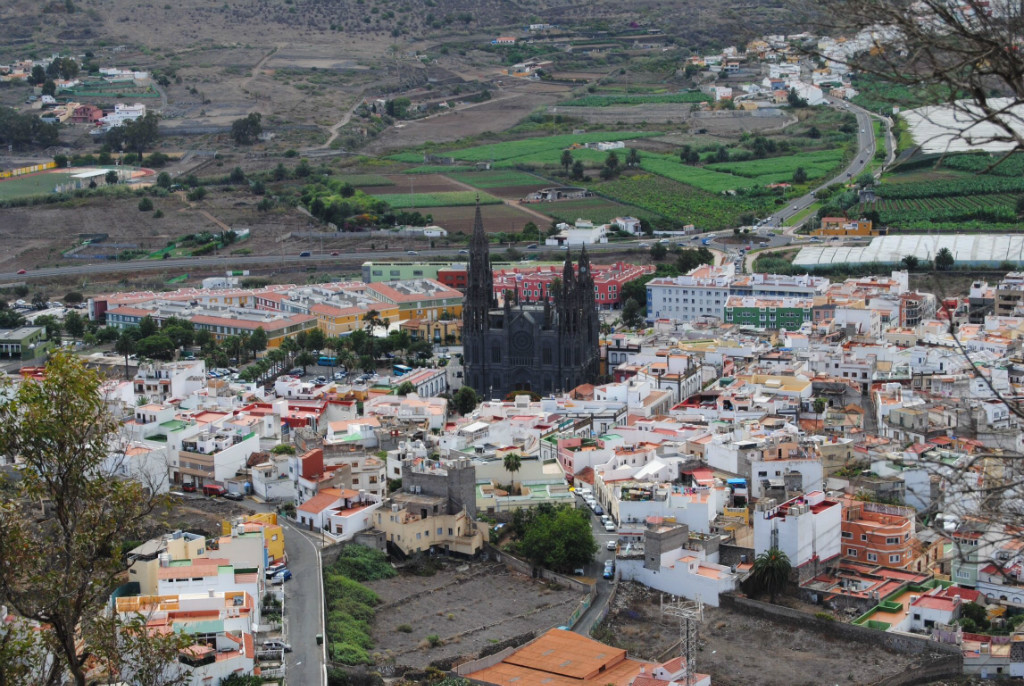
Foto credit Ayuntamiento de Arucas
Arucas es una ciudad agradable donde se puede disfrutar de las compras, comer y beber en una terraza o en uno de los acogedores restaurantes. Los restaurantes de pescado se encuentran en la costa. En la ciudad y en el interior de Arucas, a los restaurantes les gusta servir su especialidad, guisos con alubias, calabaza, boniatos y piña.
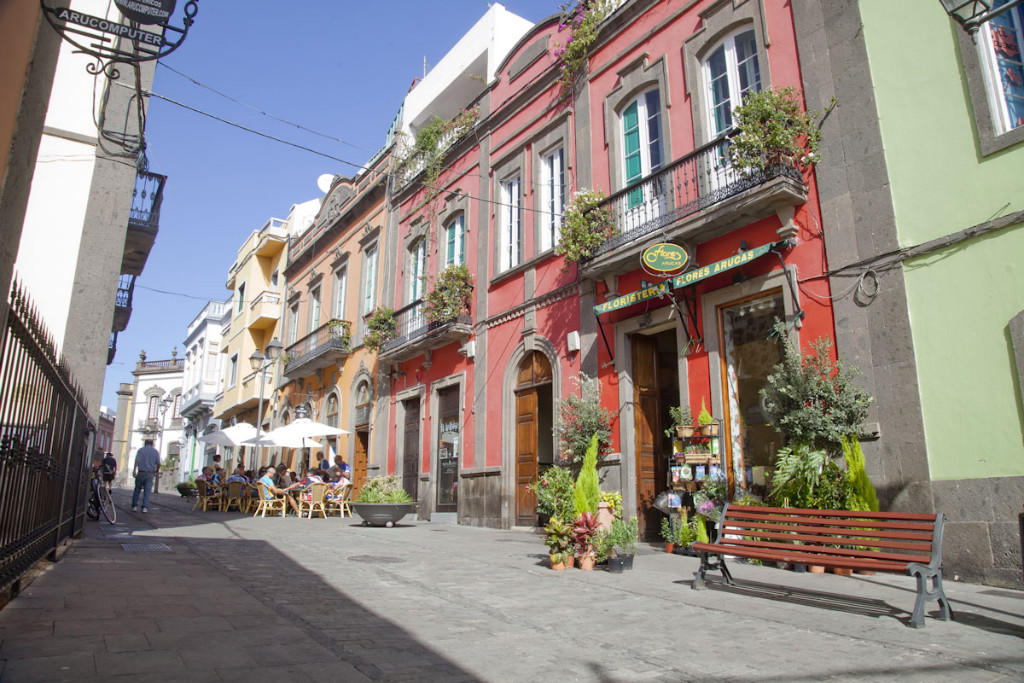
Crédito de la foto Ayuntamiento de Arucas
La mayoría de las tiendas para ir de compras se encuentran en las calles León y Castillo y Francisco Gourié. Estas calles lindan entre sí. La iglesia de San Juan Bautista se encuentra al final de estas calles comerciales. Todos los sábados por la mañana tiene lugar en estas calles comerciales el mercado semanal.
También puede descubrir y comprar la antigua artesanía de Arucas en las tiendas. Tallas de madera, instrumentos musicales, cestas de mimbre, encajes, bordados y cuchillos canarios son productos elaborados por los lugareños desde hace décadas. Es probable que también encuentre en las tiendas esculturas y obras de arte en piedra, uno de los oficios artísticos más antiguos de la región. La escultura es un oficio que se enseña a los escultores desde una edad temprana.
Iglesia de San Juan Bautista
El edificio más importante de Arucas es, con diferencia, la Iglesia de San Juan Bautista. Esta majestuosa iglesia tiene un gran valor social para la ciudad de Arucas. Fue construida con piedras de Arucas y realizada por artesanos locales. La construcción comenzó en 1909 y duró 68 años. El diseñador de esta basílica es el arquitecto Manuel Vega.
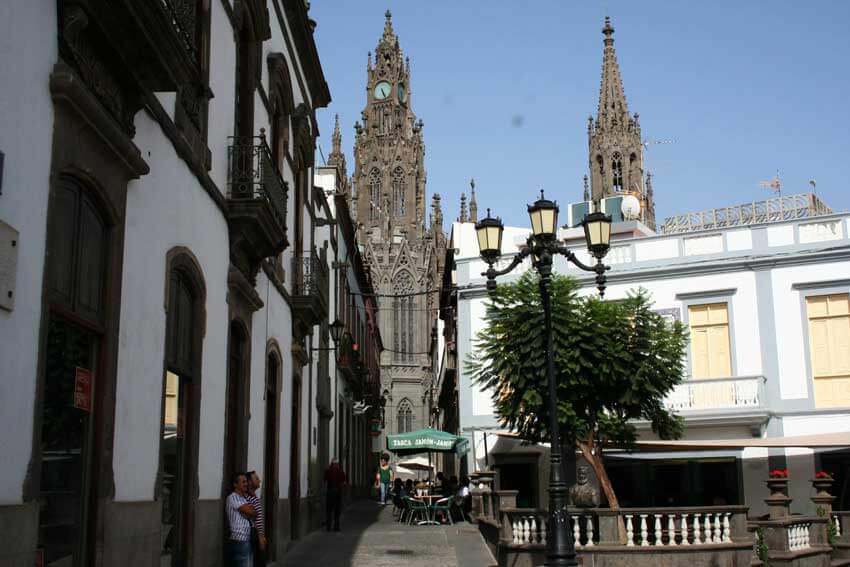
No sólo canteros de Arucas construyeron la iglesia. También lo hicieron artistas como el pintor canario Cristóbal Hernández de Quintana, que dejó su impronta en las numerosas y bellas vidrieras. El escultor Manuel Ramos puso su mano en una estatua yacente de Cristo.
En el siglo XVII, la capilla pasó de ser una simple construcción central a una iglesia de tres naves de estilo renacentista. Desde finales del siglo XVII, se ha añadido una campana de torre en el flanco norte. La fachada es de estilo romano y está construida en piedra azul de Arucas. En 1846 también se colocó una campana en la torre sur.
El altar, la mesa del altar y los nichos se tallaron en madera de cedro. En la iglesia también se puede visitar la «Capilla de Nuestra Señora del Carmen» y un baptisterio. Todavía se pueden admirar muchas esculturas y marcos de ventanas de gran belleza.
La iglesia está situada en la Plaza de San Juan. Coloquialmente se la denomina «Basílica o Catedral de Arucas». Sin embargo, no es ni lo uno ni lo otro, sino simplemente una iglesia. Originalmente, la iglesia se construyó en un lugar donde había una capilla en 1503 y que en realidad dio origen a Arucas. La entrada a la iglesia es gratuita. Más información sobre la iglesia de Arucas en el sitio web
Plaza de San Juan
La Plaza de San Juan ha sido siempre el centro de la ciudad de Arucas desde su fundación. Alrededor de esta plaza se encuentran edificios históricamente importantes desde el siglo XVII hasta el XX. Ya sabes que desde la plaza puedes ver la iglesia de San Juan Bautista. Pero alrededor de este núcleo de la ciudad, se puede ver una evolución de diferentes casas de varios siglos. La plaza de San Juan tiene un gran valor histórico para Arucas. Es una mezcla de cultura religiosa y doméstica.
Foto: Ayuntamiento de Arucas
La Plaza de San Juan ha sido siempre el lugar de encuentro de comerciantes y vecinos de Arucas. A lo largo de su historia, la plaza sufrió varios cambios hasta la década de 1990. La Plaza de San Juan está construida en su mayor parte con piedra azul. En 1914, se dotó a la plaza de alumbrado público.
Entre las casas históricas importantes de la plaza de San Juan se encuentran la casa parroquial, la casa Barbosa, la casa de Rafel Ponce de Armas y la Granado Marrera. La casa parroquial Casa del Cura fue construida en el siglo XVII. Es una típica casa canaria de ladrillo con paredes encaladas y tejados de tejas. Hay un patio con un drago ( Dracaena Draco ) como la mayoría de las casas canarias. El drago sólo se encuentra en las Islas Canarias, Cabo Verde y Madeira.
La casa Barbosa data de finales del siglo XVIII. De esta casa destaca su balcón de hierro fundido. Es una casa con mucha simetría. Las ventanas y puertas se caracterizan por los grandes pilares a izquierda y derecha. De nuevo, todos los materiales de construcción proceden de las canteras de Arucas.
La casa de Rafael Ponce de Armas se sitúa en algún lugar del siglo XIX. Aquí también se aprecia la simetría. Los balcones de hierro frente a los grandes ventanales también son característicos de este edificio. Para terminar esta hermosa plaza, vemos La Casa Grande Marrero construida en 1917.
Esta casa se distingue de las demás por una planta. También hay balcones de hierro fundido. La tendencia modernista de la época se refleja en el uso de decoración vegetal en los triángulos de los hastiales. La planta baja alberga las primeras oficinas del ayuntamiento de Arucas.
Si le gustan las fotos o los vídeos de vacaciones, este lugar es sin duda una visita obligada.
Plaza de Constitutión
La hermosa Plaza de Constitución alberga dos importantes edificios. La «Casa del Cabildo» o actual «Ayuntamiento» que data de 1875 y el edificio del mercado cubierto construido en 1882. Ambas casas fueron construidas en estilo electivo.
Destaca el impacto de una bala de cañón, situada en la puerta principal del ayuntamiento, provocado durante la Guerra Civil española. En el interior del ayuntamiento, en el patio, se ha colocado una placa con el real decreto de declaración de Arucas como ciudad por disposición de la reina regente María Cristina. A esta plaza da la importante calle comercial León y Castillo.
Las playas de la Costa Arucas
Arucas no es todo historia y cultura. La ciudad puede contar con algunas playas. Son playas de arena con tramos rocosos aquí y allá. Las playas están vigiladas, por lo que se puede nadar en ellas.
Hay duchas para lavarse la arena. Las playas son frecuentadas sobre todo por lugareños. Son características de esta parte de Gran Canaria las altas olas. Las playas más conocidas del municipio de Arucas son Playa El Puertillo y Playa Los Charcones.
Montaña de Arucas
El monte Arucas es un excelente mirador para fotógrafos y amantes de la naturaleza. Desde aquí se divisa una maravillosa panorámica de la ciudad de Arucas y de la zona norte de la isla. La Isleta en Las Palmas, el monte Gáldar y La Cumbre son sólo algunos de los miradores que le mimarán.
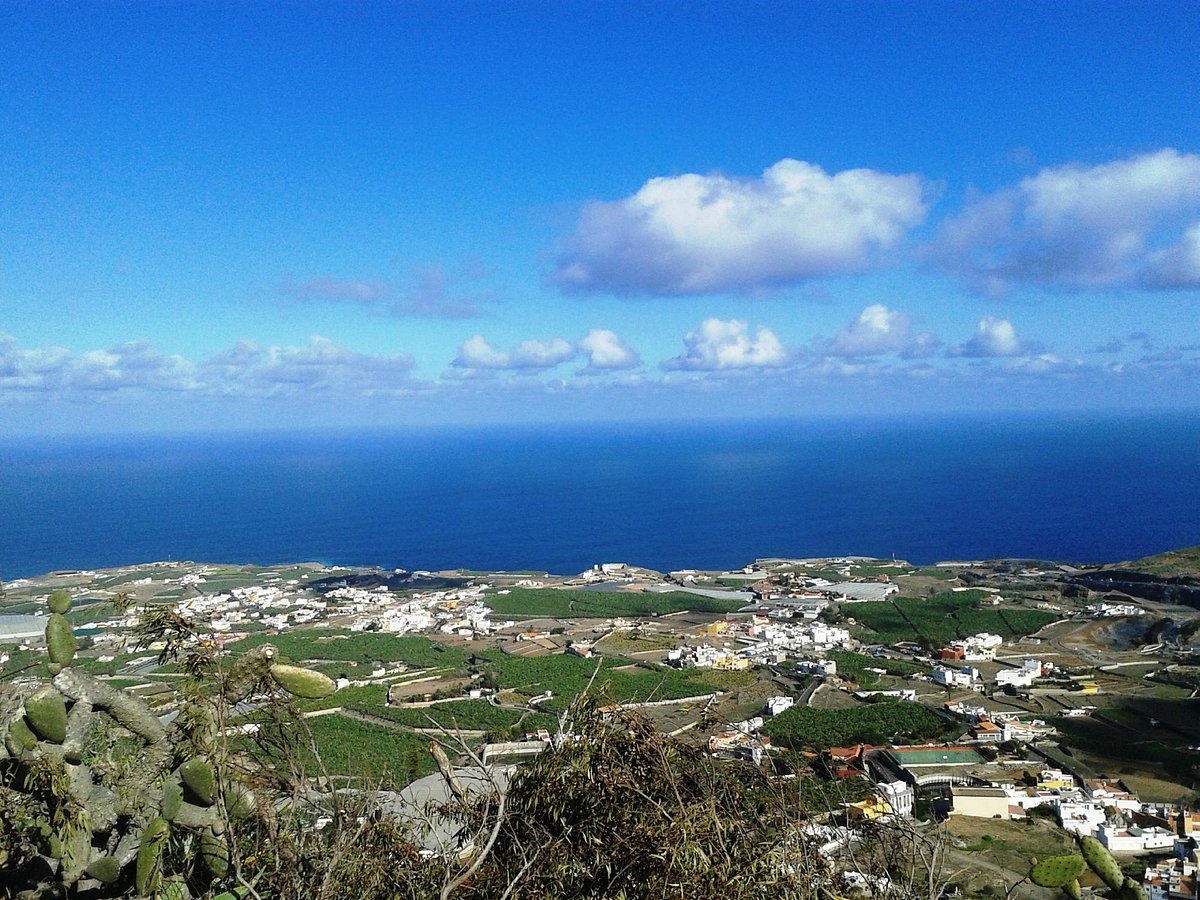
En las profundidades, también se tiene una visión general de las plantaciones de plátanos presentes. El punto más alto de la montaña es el cráter de un volcán extinguido. En la cima de la montaña volcánica de 300 000 años de antigüedad hay un mirador y un restaurante. Si viene en coche, hay un amplio aparcamiento.
Heredad de Aguas de Arucas y Firgas
De todos los Gran Canarios, es sabido que desde tiempos inmemoriales, las Heredades en esta isla han sido siempre los motores como impulsores y guías de la economía, y la riqueza y medio de vida para nuestra tierra y nuestras gentes .

Otros atractivos que caracterizan la localidad de Arucas son Museo Municipal de Arucas, Museo La Cantera, Museo Etnográfico Barrio Antiguo, Museo Del Labrante, Fundación Canaria Mapfre Guanarteme, Yacimiento Arqueológico de La Cerera, La Parra Negra, Casa de La Cultura, Casa Consistoral. Seguramente los describiremos en breve en esta página web
Hay mucho que contar sobre la histórica ciudad de Arucas. Si tiene curiosidad por saber más sobre este pueblo canario, sígame hasta los jardines y la producción del famoso ron de Arehucas.

